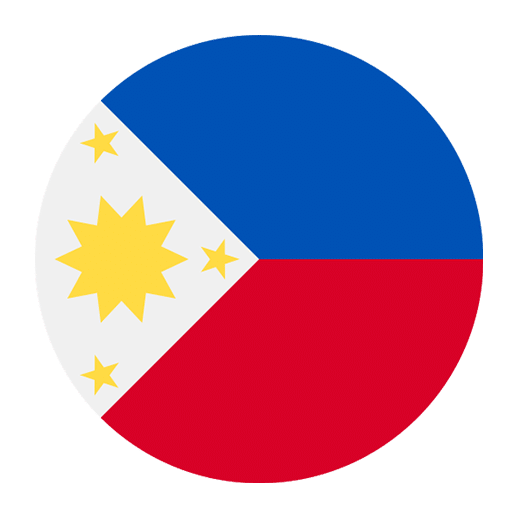Learning Tagalog, the national language of the Philippines, can be a fulfilling and enriching experience. As with any language, moving from basic to advanced proficiency requires a deeper understanding of complex vocabulary and grammar. This article aims to guide you through some of the more intricate aspects of Tagalog, helping you enhance your language skills and navigate its complexities more effectively.
Advanced Vocabulary
Vocabulary is the backbone of any language, and Tagalog is no exception. As you advance, you’ll encounter words that are not only more complex but also more nuanced in their meanings and usage.
Compound Words
Tagalog employs compound words extensively. These are words formed by combining two or more words to create a new meaning. For example:
– “bahay-kubo” (nipa hut) combines “bahay” (house) and “kubo” (hut).
– “anino-bughaw” (shadowy blue) combines “anino” (shadow) and “bughaw” (blue).
Understanding the base words will help you decode the meaning of compound words, making it easier to grasp advanced vocabulary.
Affixes
Tagalog uses a variety of affixes—prefixes, infixes, and suffixes—that can significantly alter the meaning of a word. Here are some common ones:
– **Prefixes**:
– “mag-” indicates a verb in its infinitive form (e.g., “magluto” – to cook).
– “ka-” often denotes a state or condition (e.g., “kagandahan” – beauty).
– **Infixes**:
– “-um-” is inserted to indicate an actor-focus verb (e.g., “kumain” – ate).
– **Suffixes**:
– “-in” is a common suffix that can indicate a direct object focus verb (e.g., “kainin” – to eat something).
Mastering these affixes will allow you to understand and construct more complex words and sentences.
Loanwords
Tagalog has borrowed extensively from other languages, including Spanish, English, Chinese, and Malay. Understanding the origins of these loanwords can provide valuable context. For example:
– Spanish: “mesa” (table), “silya” (chair)
– English: “telepono” (telephone), “kompyuter” (computer)
– Chinese: “siomai” (dumpling), “kuwarta” (money)
Recognizing these loanwords can make it easier to expand your vocabulary and improve your comprehension.
Advanced Grammar
Tagalog grammar can be complex, especially for those who are accustomed to the grammatical structures of Indo-European languages. Here, we will explore some of the more advanced grammatical features.
Actor-Focus vs. Object-Focus
One of the most challenging aspects of Tagalog grammar is the focus system, which determines the role of the noun in a sentence.
– **Actor-Focus**: The subject performing the action is emphasized. For example, “Kumain ang bata ng mansanas” (The child ate an apple). Here, “ang bata” (the child) is the actor.
– **Object-Focus**: The object receiving the action is emphasized. For example, “Kinain ng bata ang mansanas” (The apple was eaten by the child). Here, “ang mansanas” (the apple) is the object.
Understanding how to use these focuses correctly is crucial for constructing grammatically accurate sentences.
Aspect and Tense
Tagalog verbs do not conjugate based on tense but rather on aspect, which indicates whether an action is completed, ongoing, or not yet started.
– **Completed Aspect**: Indicates that the action is finished. For example, “kumain” (ate).
– **Incompleted Aspect**: Indicates that the action is ongoing. For example, “kumakain” (eating).
– **Contemplated Aspect**: Indicates that the action is yet to occur. For example, “kakain” (will eat).
Mastering these aspects is essential for accurately conveying the timing of actions.
Pronouns and Particles
Tagalog pronouns can be complex due to their various forms depending on the focus of the sentence. Here are some examples:
– **Nominative (focus on the actor)**: “ako” (I), “ikaw” (you), “siya” (he/she)
– **Genitive (possessive)**: “ko” (my), “mo” (your), “niya” (his/her)
– **Oblique (focus on the object)**: “akin” (mine), “iyo” (yours), “kaniya” (his/hers)
Additionally, Tagalog uses various particles that add nuance to sentences. Some common ones include:
– **”na”**: Indicates a completed action or state (e.g., “Tapos na” – It’s done).
– **”pa”**: Indicates an ongoing or incomplete action (e.g., “Hindi pa” – Not yet).
– **”nga”**: Adds emphasis or politeness (e.g., “Oo nga” – Yes, indeed).
Understanding these pronouns and particles will enhance your ability to construct nuanced and grammatically correct sentences.
Idiomatic Expressions
Idiomatic expressions are phrases whose meanings cannot be inferred from the literal meanings of the words. Learning these can add depth to your language skills and help you sound more like a native speaker.
– **”Bahala na”**: This phrase is often used to express a sense of resignation or acceptance of whatever may come, similar to “Come what may.”
– **”Nasa Diyos ang awa, nasa tao ang gawa”**: This expression means “Mercy is with God, but effort is with man,” emphasizing the importance of human effort.
– **”Balat-sibuyas”**: Literally “onion-skinned,” this idiom describes someone who is overly sensitive.
Incorporating idiomatic expressions into your speech can make your Tagalog sound more natural and fluent.
Practice and Application
Understanding advanced vocabulary and grammar is only part of the journey. The key to mastering any language is consistent practice and application. Here are some strategies to help you practice effectively:
Engage with Native Speakers
One of the best ways to improve your Tagalog skills is by engaging with native speakers. This can provide you with real-world context and help you understand how the language is used in everyday situations. Consider joining language exchange programs, participating in online forums, or using language learning apps that connect you with native speakers.
Read Advanced Materials
Reading advanced materials such as newspapers, books, and academic articles can expose you to complex vocabulary and grammar. Pay attention to how sentences are structured and try to identify the use of advanced grammatical features.
Write Regularly
Writing can help reinforce what you’ve learned and improve your ability to construct complex sentences. Try keeping a journal, writing essays, or even composing short stories in Tagalog. This will also give you the opportunity to experiment with advanced vocabulary and grammar.
Listen to Advanced Content
Listening to advanced content such as news broadcasts, podcasts, and lectures can improve your comprehension skills. Pay attention to the pronunciation, intonation, and context in which words and phrases are used.
Take Advanced Language Courses
If you prefer a structured learning environment, consider enrolling in advanced Tagalog courses. These courses can provide you with comprehensive lessons on complex vocabulary and grammar, as well as opportunities for practice and feedback.
Conclusion
Mastering advanced Tagalog requires a deep understanding of complex vocabulary and grammar. By learning compound words, affixes, and loanwords, you can expand your vocabulary. Understanding the focus system, verb aspects, and the use of pronouns and particles will enhance your grammatical skills. Incorporating idiomatic expressions can make your speech more natural and fluent.
Consistent practice and application are crucial for mastering any language. Engage with native speakers, read advanced materials, write regularly, listen to advanced content, and consider taking advanced language courses. With dedication and persistence, you can navigate the complexities of Tagalog and achieve advanced proficiency.
Happy learning!

